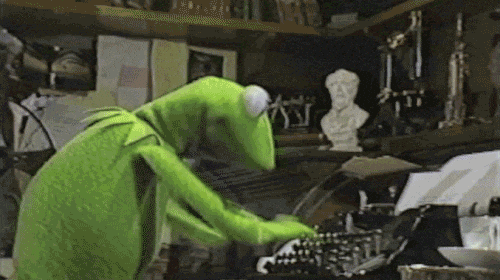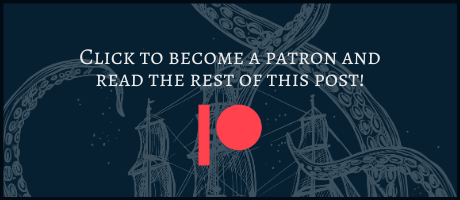Does anyone else hear the phrase “a picture is worth a thousand words” and feel a vague sense of dread?
No? Just me? Too many years of writing and editing, I guess 😅.
Jokes aside, one of the issues I notice both in my own work and in client work is the dreaded overwritten draft. I put too many words onto the page because I feel like I need to describe everything I ‘see’ when the story enters a new setting. Or because I’m trying super hard to drive a point home. Or because there’s something important about what I’m describing, and I don’t quite trust myself to build up enough context for the reader to ‘get’ it.
One of the best pieces of writing advice I’ve received was to be sure all of my written-word ‘pictures’ were doing double-duty. In other words, my descriptions are never just about telling the reader what something looks like. Rather, I’m using the description as an opportunity to do one of the following:
- Tell the reader something about the POV character
- Enrich the POV character’s voice
- Tell the reader something about the quality/nature of what’s being described (beyond its appearance)
- Establish a vibe
When we pack extra layers of meaning into our descriptive prose, we’re no longer giving the reader a laundry list of facts. Instead, we’re giving them context through which they can better understand the POV character, the side characters, the setting, or the story as a whole.
Let’s dive in with some examples.
Great description can use comparison to tell us about the POV character—sneakily.
She was taller than him, though given how frequently his sister called him “short king,” that wasn’t surprising. What did catch him off-guard was the sheen to her dress, the fancy little rhinestones on her heels—the whole look, really. It had him second-guessing his choice of jeans and gym shoes.
Here, we learn two important physical details about our POV character: he’s short, and he’s wearing jeans and gym shoes. We also learn four other non-physical details: he has a sister, he has a relatively healthy relationship to his height, he’s the kind of person who notices an outfit, and he’s invested enough in whatever event he’s attending to care about how others perceive him and what he’s wearing.
That’s a lot of heavy lifting for a description! And it’s much more interesting than saying something like “She was tall and wore a cocktail dress with a slight sheen and a pair of matching rhinestone heels.”
You can use this same technique to divulge important backstory for the POV character:
I did a double-take. He had the same sunken eyes and crooked grin as Mr. Anders, my sophomore math teacher. It wasn’t him—this guy was much taller, and had far meatier shoulders—but I can’t say I was disappointed. I’d never been a math guy, and Anders hadn’t exactly appreciated the hard work I’d put into cheating on my midterm exam.
Whether or not it’s important to the story that the protagonist cheated on their sophomore math midterm, these little backstory details serve two additional purposes: they 1) contribute to the perception that the POV character is a full and complete human with a full and complete life that predated the start of the story, and 2) help the reader better understand what kind of person the POV character is.
But that’s not the only way description can enhance characterization.
Strong description is voicey.
Consider the difference in personality between these two narrators:
Narrator one:
Those fucking mountains. I’d nearly frozen my ass off crossing their snow-capped peaks to get here, and I didn’t relish the thought of trekking back through them again. But they boxed in the city on all sides, and short of rolling over and dying here in Niasenne, trek I would.
Narrator two:
I dreaded our return to the mountains. The crossing to Niasenne had been treacherous, and twice, I’d feared the range’s vicious blizzards would end us. Yet the trade roads had closed for the season, and frigid peaks ringed the city, leaving us with few other options. If we wished to fulfill the Acranist’s directive, trek we would.
These two narrators sound like entirely different people, and they very likely are—unless Narrator One is how the POV character would express themself in monologue and Narrator Two is how they’d write in a journal or letter. This is what agents and editors say when they talk about voicey prose. Even the description of something as simple as a mountain range feels deeply tinged with the narrator’s speech patterns, opinions, and personality.
Description can tell us about more than just appearance.
By injecting personality into description, we can transmit information about the quality and nature of what’s being described. This doesn’t have to be opinion-driven. One of the most effective ways to deliver context—particularly worldbuilding context—is by parceling out description in this way. For example:
I counted seventeen men in red-tufted helmets—three short of a full squadron. Had they lost men along the way, or was the draft so unpopular they couldn’t drum up enough hands for the cause?
Especially in SF and Fantasy, the reader relies on the narrating character to unpack and give meaning to the worldbuilding facts delivered through descriptive narration. By blending description with processing and conjecture, you can build that context in slow layers (rather than tossing it all out in a single, massive worldbuilding dump).
These little layers of context can also be deeply subjective when necessary:
His cheekbones were sharp enough to cut, but for a smile like that? She was willing to risk it.
This one might be short and to the point, but it’s powerful, right? It not only tells us something about the physical attractiveness of the character being described, but about 1) how the POV character perceives that attractiveness and 2) what she’s willing to do about it.
That’s a lot of context for a single line of narration! And if you’ve ever wondered how Romance authors use narrative sleight-of-hand to weave compelling chemistry between their lead characters . . . this is one of many great tools in their toolbox.
Use description to establish vibes.
Which leads me into my final point. Description can be used to establish the most nebulous elements of a story: the vibes. Consider the difference between these two sentences:
A set of knife-point peaks loomed over the fortress.
And
Beyond the fortress walls, towering mountains stretched to the sky as if in prayer.
These lines give us the same raw descriptive information, right? There’s a fortress. Beyond it are very tall mountains. But the word choice, sentence structure, and delivery of those lines changes the vibe entirely.
The first example is sharp, blunt, and to-the-point. It uses a slightly uncomfortable metaphor (knife-point peaks) and establishes the threatening nature of the mountains by showing them “looming” over the fortress. By contrast, the second example is lyrical and flowy, and it uses a two-clause sentence. Here, the mountains don’t loom—they tower. Alliteration softens the phrase with “stretch to the sky,” and rather than leaning on violent characterization, the final phrase, “as if in prayer,” gives the impression of yearning piety.
This kind of writing can enhance the mood / vibe of a story. Furthermore, specific verbiage or imagery can play into a motif that reinforces the story’s theme, foreshadows a future event, or creates a narrative callback to earlier scenes. Horror writers will choose language carefully to cultivate dread; on the flip side, comedic writers will craft parallels that get the reader chuckling or, otherwise, help set up a joke.
Matching the vibe to the story (and authorial intent) is important, and descriptive verbiage is a powerful tool for doing so.
A picture is worth a thousand words
A picture might be worth a thousand words, but so, too, are a handful of well-crafted sentences that leverage the true power of strong descriptive writing. Next time you find yourself with several paragraphs of narration or description, run the section through this system to figure out whether it would be possible to add dimension.
Great description can serve double- and triple-duty, just like a beautifully painted portrait. Now let’s pick up our brushes and get writing!
Interested in working more on descriptive prose and character voice? I’ve made a worksheet for using description in both narration and dialogue to sharpen characterization. Check it out under ‘free resources’ in the shop!





